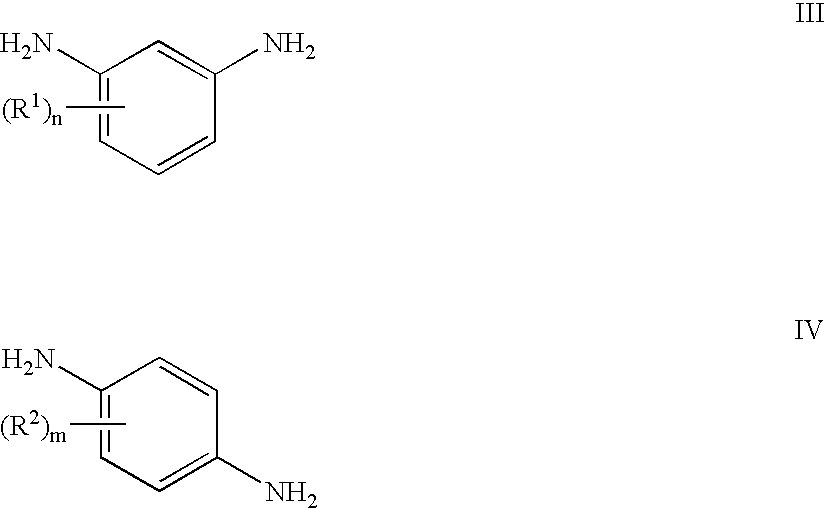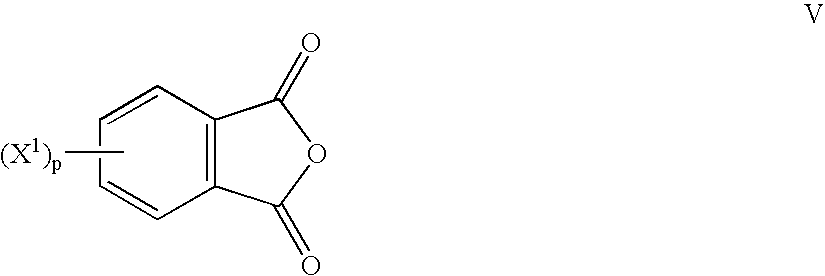Method to prepare bis(haloimides)
a technology of halophthalmic acid and bis, which is applied in the field of improved methods for the preparation of bis (halophthalmic acid), can solve the problems of difficult process steps, and inability to meet the requirements of the polymer,
- Summary
- Abstract
- Description
- Claims
- Application Information
AI Technical Summary
Problems solved by technology
Method used
Image
Examples
examples
[0058] The following examples are set forth to provide those of ordinary skill in the art with a detailed description of how the methods claimed herein are evaluated, and are not intended to limit the scope of what the inventors regard as their invention. Unless indicated otherwise, parts are by weight, temperature is in ° C.
[0059] A 500-gallon stainless steel hot oil jacketed reactor with the configuration as described in the specifications was used for the reaction. The vessel was charged with chlorophthalic anhydride (ClPA) / o-dichlorobenzene (o-DCB) at about 12% solids content, 355.9 pounds of dry weight ClPA. The material was heated to reflux before analysis by High Performance Liquid Chromatography (HPLC) to determine the molar ratio of diacids to anhydrides. The solution was also analyzed for 3- and 4-ClPA and phthalic anhydride. Phthalic anhydride was added at this stage as chain stopper.
[0060] Molten meta-phenylene diamine (mPD) (103.5 pounds) was then slowly metered, over...
example 2
[0063] The general procedure as described in Example 1 was followed. In the final step, SPP imidization catalyst was left out of the reaction, and the ClPAMI was dried under pressure (18 to 25 psig), at a temperature in a range of from about 218° C. to about 250° C. (425° F. to 480° F.), at a solids contents of from about 15% to 17%. Hot o-DCB spray was used to chase water from the vessel in the level control mode. Once the overhead o-DCB was found to contain less than 20 ppm water, the pressure was relieved from the vessel and the amount of solid ClPAMI in the slurry was adjusted to a range of from about 20% to about 25% solids just prior to the polymerization reaction.
[0064] Once the polymerization reaction was completed in the imidization / polymerization vessel, the reaction mixture was transferred to the quench vessel. The polymerization vessel was then washed with hot o-DCB to clean the tank. This rinse was found to contain undetectable amounts of ClPAMI and was then sent forwa...
PUM
| Property | Measurement | Unit |
|---|---|---|
| Temperature | aaaaa | aaaaa |
| Temperature | aaaaa | aaaaa |
| Temperature | aaaaa | aaaaa |
Abstract
Description
Claims
Application Information
 Login to View More
Login to View More - R&D
- Intellectual Property
- Life Sciences
- Materials
- Tech Scout
- Unparalleled Data Quality
- Higher Quality Content
- 60% Fewer Hallucinations
Browse by: Latest US Patents, China's latest patents, Technical Efficacy Thesaurus, Application Domain, Technology Topic, Popular Technical Reports.
© 2025 PatSnap. All rights reserved.Legal|Privacy policy|Modern Slavery Act Transparency Statement|Sitemap|About US| Contact US: help@patsnap.com



